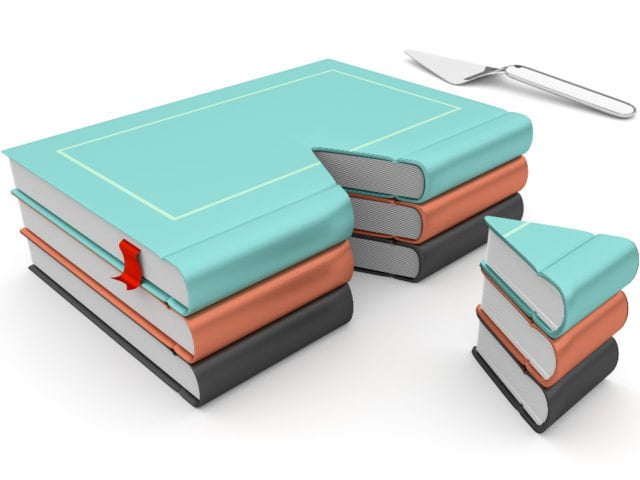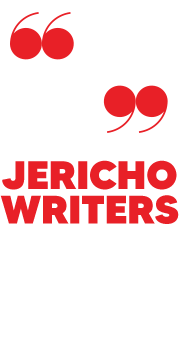You’ve written the book, all the words are on the page and you are finally happy with the end result. Now what?
How do you lay out a book for publication and what are the different parts of a book?
In this article, I will cover all the parts of a book (in order) you are expected to include, what their purpose is and how they should be laid out.
It doesn’t matter if you are self-publishing or being published traditionally, understanding the different parts of a book in order, how they function and why you need them is important. You may not have to take part in compiling each and every one, but even if you are being traditionally published (and it’s not be your job to compile all the different sections) understanding the contents of a book and all their functions is paramount to understanding the publishing journey as a whole.
What Are The Parts Of A Book?
Even if you’ve already polished your chapters to perfection, you still need to prepare various other parts of your book before publishing — namely, the front matter and the back matter.
Now, these terms are not going to be instantly recognisable to you unless you have worked in publishing, but don’t worry, there’s no need to feel intimidated.
All books are broken down into three main categories, the front matter, the body and the back matter. These three sections can then be broken down further and I will attempt to make each of these sections as clear as possible. By the end of this article, you will know all the sections of a book in chronological order.

What Is The Front Matter Of A Book?
In the simplest of terms, the front matter is a collection of pages at the very start of a book.
Although many readers tend to skip the pages that make up the front matter, this section contains the most important information about the author as well as the publisher.
For those who do read these pages, they are important – so it’s vital you get the details right, and that just as much importance is placed on these pages as any others.
If you are self-publishing, it is even more important to make sure these pages include the correct details. If you are being traditionally published, a few of these pages are taken care of for you, but it’s always important for the author themselves to understand how they work and check the details to ensure they are correct. After all, you’ve spent so much time getting the book right, why make a mistake at this stage?
Within the front matter of the book, you will find the following (in chronological order).
Now, remember we are not talking about the front covers or the back of the book here – these are all the parts INSIDE the book, and they almost always appear in the front matter:
Frontispiece
A frontispiece is a decorative illustration page that typically appears on the page facing the title page, on the left-hand side. In many books published in the 1800s, this page was often used to display an image of the author and a space for their signature but these days, many fiction writers (depending on genre) will use this area for a map of their ‘world’ or to illustrate an important moment or theme in the book. Or it’s left blank.
The Title Page
The title page of a book will always appear in the front matter. This is the page that displays the full title of the book, as well as the author’s name, as they appear on the cover of the publication. This information determines how a book is cited in libraries and any additional references, so ensuring this information is correct is vital.
This is the place where most authors sign their books.
The title page may also include the name of the book publisher and date of publication.
The Copyright Page
The copyright page is always found in the front matter and includes all the technical information about the copyright of the publication, as well as the edition and publication dates, legal notices, the ISBN and details of publisher and printer. This page is generally found on the reverse side of the title page in the front matter. The copyright page is sometimes referred to as the ‘colophon’.
The Dedication Page
A dedication page can be added by authors who wish to dedicate their book to a person or persons of importance. It is typically found after the copyright page in the front matter. Although this is generally a one line or one sentence dedication, it is given its own page and focus towards the start of the book.
The Table Of Contents
If an author chooses to include a table of contents (generally found in non-fiction), it will be found in the front matter of the book and should list all the major sections of the book that follow it, including chapters found within the body of the text and in the back matter.
The Introduction
An introduction page is generally only found in non-fiction books. This is different to a preface found in fiction books. An introduction page (found in the front matter) explains the necessary information needed by the reader to understand the context of the book before they dive into the main body. In fiction, the preface is used in a more personal way – more of an introduction as to why the book has been written and the inspiration behind it. Often, it’s in the style of a ‘Dear reader’ letter and signed by the author at the bottom.
The Epigraph
An epigraph is a quote or excerpt that often describes the subject matter of the book. This can be in the form of a poem, or an excerpt taken from another book or source, and will include a reference to the quote’s author. It is found in the front matter of the book and usually comes directly before the first chapter.
When including these it’s vital that you gain permission from the person you are quoting.
The Preface
A preface is an introduction to the book, written by the author. It often details how and why the book came to life and will provide context for the edition in hand. If a book has many editions, the preface may include details about anything changed or added since the last publication.
The Forward
A forward is an introduction to the book that is written by someone other than the author. This can be a friend, family member, scholar or peer.
The Prologue
A prologue is a section found just before the body of the book, in the front matter. This section aims to set the stage for the book and often includes an intriguing hook that will be explained more fully with the body of the book. Generally, a prologue will tell an earlier story, but is connected to the main story.
A Note On Compiling The Front Matter
Please remember that most of these sections are not compulsory (otherwise the poor reader would be sifting through many pages before they reached the story or book itself). In most cases the title page and copyright page will suffice. The rest are fun extras.

What Is The Body Of A Book?
The body of the book does exactly what it says on the tin. It’s the main content of a book. For works of fiction, this is the story itself – the place where all the magic, mystery, love, death, and murder is explored. You may also find sub-sections such as chapters and parts.
For non-fiction, the body is where all your hard work and research is broken down into the chapters that you have already outlined in your contents page.
Sometimes there are also a few extras at the end of the main text:
The Epilogue
The epilogue is a section found at the end of the body of the book (generally works of fiction) and is used to wrap up the story in a satisfying manner for the reader. If can be used to hint at something that may come in the next book or as a way to tie up the story with a neat little bow.
Postscript
A postscript is a final and brief note that brings a book to an end. Unlike an epilogue, a postscript is very short, generally only one or two sentences. A postscript is generally used to tie up the loose ends of the story, but, unlike an epilogue, this can be unrelated to the main story in the body of the book.
Afterword
This is generally found at the back of the body of the book (most commonly in non-fiction) and, in opposition to a foreword, will include any final notes the writer wishes to make.
In fiction this may be called ‘Notes from the author’ and can often be found in novels in which the author has tackled a difficult theme or wants to share how their own experiences influenced their story.
Conclusion
A conclusion section is used in non-fiction and found at the end of the body of the work. It’s a section that sums up the main arguments of the book and includes a final thought or opinion.

What Is The Back Matter Of A Book?
The back matter of a book, in opposition to the front matter, contains (surprise, surprise) all the information you will find at the back of the book.
In general, authors use this section to provide further context to their readers. It can include mentions of the authors social media accounts, other books published by the author, or even a note from the publisher themselves. These pages are often be referred to as the end matter.
Other sections you may find in the back matter can include:
Discussion Questions
Many book club fiction novels include this list in the back matter. These pages will include thought-provoking questions about the book and its themes in the hopes of sparking debate and conversation about the novel.
Non-fiction and academic books also use these pages to pose questions about the topics or subjects covered.
Accolades And Acknowledgments
Accolades or quotes from other authors can generally be found after the body of the book in the back matter. This is a chance for the author to include any positive quotes from other authors about the book, and the acknowledgments allow the author to thank all those who helped bring the book to life. Acknowledgements are generally found in the back matter, but accolades are sometimes included in the front matter, often on brightly coloured pages to draw the reader’s attention.
The acknowledgements section is a great place to look if you want to find out who that author’s agent or publisher is or want to see your own name in print after supporting a writer with their book!
Appendix
An appendix (or appendices) is generally used by non-fiction writers to provide additional information for readers, including citations, references, research text or additional source information. An author will lean on the information in the appendix to offer more credibility to the arguments laid out in the book.
Glossary
A glossary can be used by both fiction and non-fiction writers. This is a section in the back matter of the book where an author will explain any rare, specialised or unfamiliar words or terms.
Those writing in dialect, for example, may find this section helpful for their readers. Similarly, fantasy or historical fiction writers (among others) may use a glossary to help their readers understand specific terminology that may be new to them – or to translate any made-up words or phrases found in the book.
Bibliography
Generally used by those writing non-fiction, a bibliography is a section where the author will cite any and all sources and resources used during the research for the book.
Index
An index is not only beneficial for non-fiction writers, as a place to refer to sources, but they can also be useful for fiction books which have been re-published, as they may contain several reference points throughout. Any details of which will be expanded on in the index found in the back matter of the book.
Copyright/Colophon
Although this section was traditionally located in the back matter of the book, it is more often found in the front matter these days. As stated before, the colophon is a very brief section that will generally include publisher and printer details as well as any copyright information and legal notes.
The Anatomy Of A Book
It’s not until you have finished writing your first book, that you realise just how much goes into the publishing side of writing.
Knowing what extra sections will appear/are needed in your book, and why they’re important, is imperative. Why? Because this is your book and publishing is your world now too. You should know how it works.
If you are self-publishing your book you need your work to stand alone as professional and complete. And if you are traditionally published, understanding why all of this is important allows you to proof and check these pages properly, ensuring you’re happy with every last word of your work. See here for tips on how to present your manuscript. If you’re self-publishing, here’s some advice on writing a good blurb.
It also gives you the added advantage of knowing what you will be asked to provide, such as acknowledgements and a dedication. Nothing worse than having to rush a ‘thank you’ and forgetting someone!
So, now you know all the ins and outs of a book, it’s time to get that book planned and think about more than just the story. Come on, what are you waiting for. The magic won’t write itself…
Jericho Writers is a global membership group for writers, providing everything you need to get published. Keep up with our news, membership offers, and updates by signing up to our newsletter. For more writing articles, take a look at our blog page.











